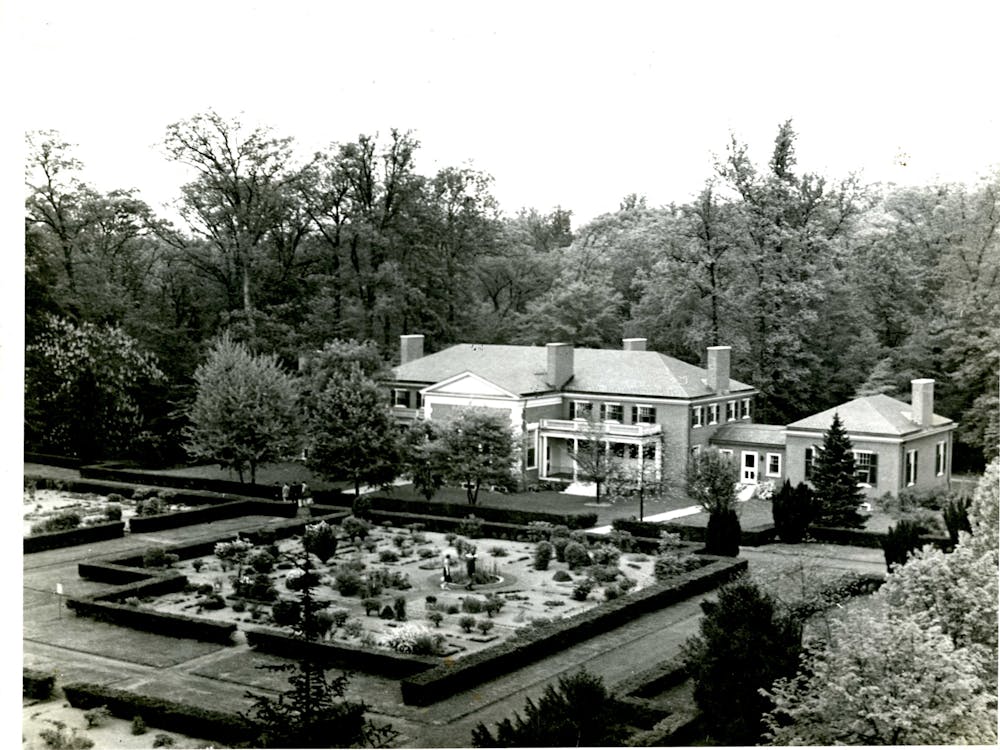As part of the Physics and Astronomy Colloquium, Steven Squyres held a talk titled “Science Results from the Mars Exploration Mission,” which focuses on his work with the Mars Exploration Rover (MER) program for NASA.
Held Oct. 9 in the Schafler Auditorium in the Bloomberg Center for Physics and Astronomy, Squyres’s talk focused on how his work in studying Martian geology contributes to determining whether Mars has ever been a habitable planet.
Squyres is a James A. Weeks Professor of Physical Sciences at Cornell University, and was a principal investigator of the Mars Rover mission. His work on Mars revolves around the robotic exploration of Mars, Martian geology and tectonics and the history of water on Mars.
Squyres said that mainstream media reports about water on Mars, and public excitement about what that means for life on Mars is not fully justified. Many, including Squyres and his team, search for ancient clues as to the presence of water on Mars. The presence of water suggests the possibility of life-sustaining conditions.
Squyres also spoke about the hostility of conditions on Mars, such as the acidity of its environment. He presented data and pictures taken from the surface of Mars using Spirit and Opportunity, the two rovers sent to Mars as part of the MER mission.
Launched in 2003 to undertake a 90-Martian day mission, Spirit and Opportunity greatly exceeded expectations for both the duration of their activity and the quantity of the data they collected, according to Squyres. Spirit ceased communication in 2010, while Opportunity remains active today. Squyres used the measurement tools on Opportunity in order to explore Mars.
The presentation began with a description of the scientific instruments and observation tools in the rover’s payload, as well as an overview of Opportunity’s path through different Martian craters and plains.
“I enjoyed hearing about the wide range of the mission’s results in detail,” Lauren Aldoroty, a sophomore physics major, said.
Opportunity landed in Gusev Crater, which initially appeared to be an ancient lake with sedimentary rock connected to what appeared to be a riverbed. However, as the rover took measurements, it became clear that the geology reflected volcanic activity rather than water activity. Traveling from the Gusev crater to the Columbia Hill and onto Home Plate, Opportunity found evidence of water, both in acidic and neutral conditions, in the forms of silicon deposits and wave erosion.
Squyres presented several photos comparing the Martian samples with those found on Earth.
“The thing that really stood out to me was how the pictures of Mars looked like they could have been taken here on Earth,” Rodrigo Aguilar, a sophomore physics major, said.
In the middle of presenting his team’s findings about Martian geology and water history, Squyres transitioned the discussion to recreational Martian astronomy.
Squyres showed photographs that Opportunity took of a Martian partial solar eclipse, a lunar eclipse and Phobos and Deimos, the two Martian moons. He also presented a photo capturing a meteor burning up in a blaze of bright green in the atmosphere above Mars.
After this interlude, Squyres returned to Opportunity’s exploration of Martian geology. For three years, Opportunity traveled to reach Endeavor crater, a formation far more enormous and ancient than the ones it had previously visited. Endeavor closely resembles the Ries crater, which is located in Western Bavaria, Germany.
Opportunity found clay in Endeavor, which Squyres explained is good evidence of water, as well as neutral pH conditions. He emphasized that this finding is a noteworthy scientific breakthrough.






















Please note All comments are eligible for publication in The News-Letter.